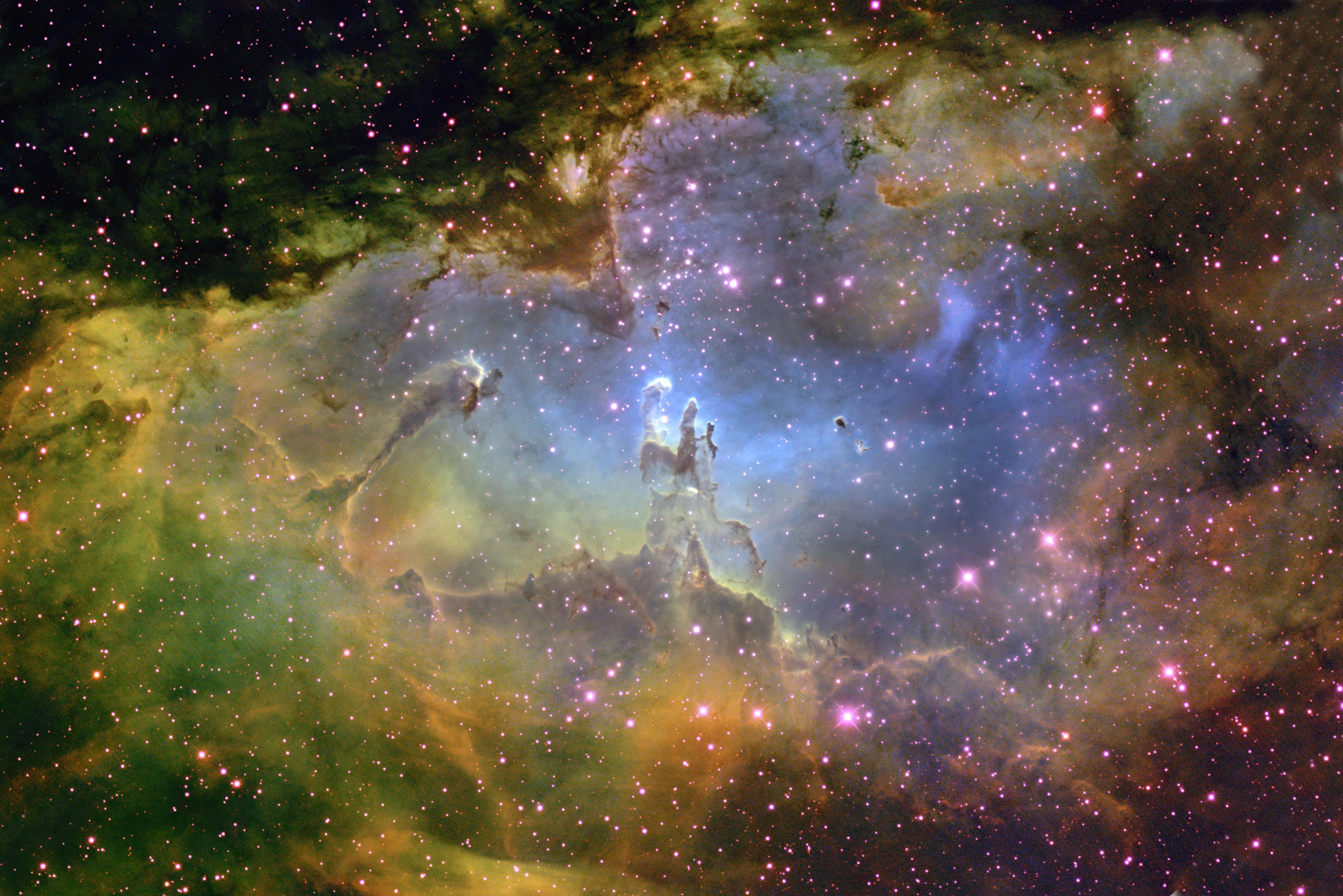Submitted by Rockclimber88 t3_11pmuu8 in space
Comments
drmirage809 t1_jc03kz2 wrote
They are what is known as a stellar nursery. Inside these pillars of gas stars are being formed in truly breathtaking numbers. Looking up close you can see the young stars shining through the clouds.
Sadly they no longer exists. The light we are seeing is about 7000 thousand years old and in those years they've probably been blown apart by the stellar wind of all the stars that have formed inside them.
Splive t1_jc1uv4g wrote
Wait really? I'm so used to thinking about galactic level events happening over millions or billions of years. Had not expected that such a change could be on the timeline of humanity.
vertigo-one t1_jc616hg wrote
7000 thousand = 7 Million That's how I read it. Dunno why it was written that way.
DaveMcW t1_jc34gzo wrote
The theory of special relativity says that our reference frame where they still exist is perfectly valid.
The reference frame in the middle of the cluster where they no longer exist is also valid.
Natiak t1_jc4z3yg wrote
Does this mean if you were traveling at the speed of light you would exist in a single reference frame?
Rockclimber88 OP t1_jc03jgb wrote
The pillars are that "hand" in the middle. It's a famous photo taken by Hubble telescope in 1995. "These elephant trunks had been discovered by John Charles Duncan in 1920 on a plate made with the Mount Wilson Observatory 60-inch telescope"
Usually they're shown more zoomed in(newer photo from 2014) https://upload.wikimedia.org/wikipedia/commons/6/68/Pillars_of_creation_2014_HST_WFC3-UVIS_full-res_denoised.jpg
toatsblooby t1_jc09hwy wrote
And the beautiful eagle nebula to the left of the pillars in this shot!
TheNebulaGuy t1_jc0a0ud wrote
Did you take this? If so do you mind sharing your acquisition details? I'll be attempting the eagle nebula sometime this year.
Rockclimber88 OP t1_jc544ge wrote
It's a famous photo taken in 1995. I took it from wayback machine because the website they were orignally on was down.
[deleted] t1_jbyo9ba wrote
[removed]
[deleted] t1_jbz1swy wrote
[removed]
[deleted] t1_jbz42on wrote
[removed]
[deleted] t1_jbztvs0 wrote
[removed]
[deleted] t1_jc0t6g0 wrote
[removed]
[deleted] t1_jc168n2 wrote
[removed]
iKillBugs4Work_AMA t1_jc1elzw wrote
Ok, I'm very very new to space and astronomy stuff. Are each of those shining lights stars? Each with their own solar system? I know there are an absolutely incomprehensible amount of stars in the universe. But, if this is just one section of the universe, and there are that many stars in this picture alone, it's even more mind-boggling now.
Or are the shining lights/dots different things? Sorry if this is a dumb question, I'm just trying to understand the universe a bit more and I think space in general is super, super cool. And terrifying. Definitely that too
anima99 t1_jc2kn8g wrote
Each star doesn't have to be a "system," per se. They can simply be massive balls of gas with rocks/ice/metals around them.
They may form into planet-sized chunks, but it's difficult to determine given their distance. Not to mention some of these stars don't live long enough to form their own systems as they can sometimes collide or spin too fast and just lose form.
Those stars may also be explosions or supernovas, but this is the limit of what I have personally read about without Googling them again.
iKillBugs4Work_AMA t1_jc2xp0a wrote
Got it. Thanks for the detailed explanation. I know what my next research rabbit hole will be. So much interesting stuff in a place that's so unknown to us.
toatsblooby t1_jc34jap wrote
This section of space often called "the eagle nebula" is 7000 light years from earth. As I understand it the only thing bright enough to form those shining lights from such a distance would be other stars! (This nebula is still in the milky way so as I understand it those bright lights shouldn't be other galaxies, as they'd be hidden by dust and closer stars.)
I don't know exactly how big of "a spot" this would be in the sky, but my gut tells me this entire image would only take up a chunk of the sky about the size of a small pebble held in your outstretched hand. Space is unfathomably big.
One of the first James Webb images of the deep field shows thousands of GALAXIES in a single image, as well as some stars in our own galaxy in the foreground. They aimed the telescope at a very dark section of the sky for many hours to actually capture enough light to produce the image!
[deleted] t1_jc1r7xg wrote
[removed]
[deleted] t1_jc1uh1q wrote
[removed]
alexkent_200 t1_jcndt08 wrote
Personally, the original Pillars photo is the most metal thing in all of astrophotography for me.
I get goosebumps every time I see the photo.
[deleted] t1_jcodni0 wrote
[removed]

MrSnow702 t1_jbzwsav wrote
Can someone ELI5 why these are called the pillars of creation? And what are they exactly?